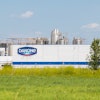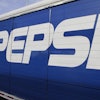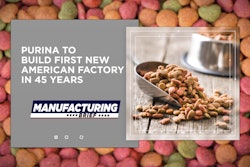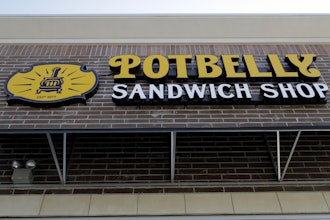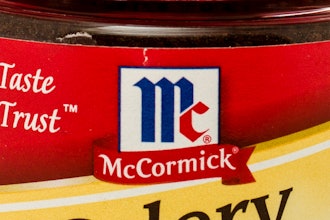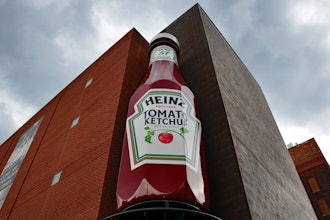
With oversight from regulators intensifying, food processors must verse themselves in the intricacies of this evolving landscape and take adequate steps to protect themselves from potential enforcement actions from federal and state agencies.
The passage of the Food Safety Modernization Act (FSMA) in 2011, significantly reformed the Food and Drug Administration’s (FDA) food safety authority. It provided the FDA with new and enhanced mandates intended to protect consumers and public health. For food processors, the passage of this law reinforced the need to address existing liabilities as well as many new areas of risk.
Food processors found in violation of existing regulations face strict punishment and potentially significant penalties that can severely damage their bottom line, disrupt operations and damage their reputation in the eyes of their customers and partners.
Given the breadth of risk the food industry faces on a daily basis and the intensifying focus on food safety and new regulations from the FSMA, the stakes are higher than ever before. It is essential for all food processors to take adequate measures to fully protect themselves in this evolving landscape.
Doing so requires enacting risk management programs and securing insurance coverage for a wide range of exposures from property damage to workers’ compensation and everything in between. But before locking down coverage, it helps to fully understand this evolving regulatory environment, insurance market dynamics and the wide-ranging and evolving risks facing this critical industry.
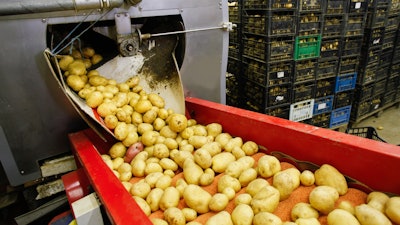 iStock
iStock
Key components of regulation
U.S. federal food law applies to all food that crosses state lines, including any ingredients that may have traveled across state borders. Because of this, most foods fall under federal jurisdiction. These processors are also subject to the state laws in which they operate and store food. State agencies also have an active role in overseeing food processing businesses within their respective states, but their role is in collaboration with the federal agencies. While there are many aspects of food regulation processors need to keep track of, there are a few critical components and terms that warrant close attention and consideration:
Food Safety Modernization Act: The Food Safety Modernization Act (FSMA) was signed into law in 2011 by President Barack Obama. It is the most sweeping reform of FDA's food safety authority in more than 70 years. The FSMA gives the FDA enhanced mandates and authorities intended to protect consumers and promote public health. It aims to ensure the food supply is safe by shifting the focus of federal regulators from responding to contamination to preventing it.
Good Manufacturing Practices (GMP) and Hazard Analysis and Critical Control Point (HACCP): Federal and state law prohibit the sale and distribution of adulterated food. Considering this is such a broad prohibition, included in the law is the idea that processors will do all they can to minimize the risk of adulteration. Previously, the rules that guided processors were called Good Manufacturing Practices (GMP). GMPs addressed everything from personnel, buildings and facilities, to equipment and utensils, warehousing and distribution.
In the 1990s, the concept of Hazard Analysis and Critical Control Point (HACCP) was introduced, which refined but did not replace GMPs. In a nutshell, HACCP dictates that each food business assess the risks associated with its own products and develop practices that broadly reduce the risk of unsafe food.
Its principles state that while there is no way to guarantee that food is safe, companies must do the best they can to reduce or minimize the risk of unsafe food. Also, because every food manufacturing process poses its own unique risks, each business needs to address its own practices.
Generally Recognized As Safe (GRAS): Before they’re processed, packaged and sent to consumers, foods come into contact with a multitude of surfaces and are added with many different ingredients and substances. All surfaces and substances must be “generally recognized as safe” by the FDA or USDA. Otherwise, the food will be deemed adulterated and unsafe for consumption by the general public.
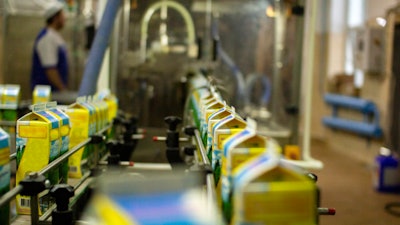 iStock
iStock
Current insurance industry response: Gaps, solutions and implications
Many insurers offer insurance service office (ISO) style contracts which don’t consider special needs driven by regulated industries. Factors which influence the insurance market for food processors include:
Highly competitive marketplace: The list of insurers willing to underwrite food business is long and there has consistently been an active market willing to write business, but participation ebbs and flows with market cycles and results.
Regulatory influences: FSMA is tasked with prevention controls, inspection and compliance, imported food safety, response and coordination among safety agencies. This is a huge undertaking with frequent alleged weaknesses adversely impacting public safety. The regulation heightens public and legal sensitivity to foodborne illnesses, recall and lost inventory. Insurance companies have overall been slow to amend property and casualty coverages to reflect regulatory influences on coverage.
Aside from regulatory risks, food processors face many traditional areas of risk and liability that must be addressed with insurance coverage. Below are a few areas of liability that could lead to potentially large damages and claims:
- Property - Damages due to spoilage, change in temperature or change in flavor, contamination and resulting regulatory condemnation. Non-physical damage claims, including failure to meet label requirements or specifications, can result in serious financial and reputational damage. Business interruption may be impacted by regulatory requirements long after physical restoration of damages. Additionally, machinery breakdown can have catastrophic consequences to food processing or storage exposures. Damage to boilers and other large pieces of equipment unique to the food processing industry can lead to big claims.
- Cargo exposures may also factor into the challenges faced by food processing companies, along with mechanical breakdown, spoilage and theft.
- General liability and excess umbrella policies can cover injuries from acute food borne illness that can affect a large segment of the public. Latency from ingredients and impaired property physical damage can cause losses from contamination or adulterated ingredients.
- Cyber risks are evident due to highly automated, network-connected manufacturing equipment that can be compromised by an internal or external attack. The adoption of blockchain to manage the supply chain creates both dependence on the Internet of Things and vulnerabilities in the chain of control.
- Automobile liability and physical damage risks are especially prevalent in the manufacturing or distribution arenas which have large fleets with heavy trucks, a wide range of operations and lengthy drive times.
- Workers’ compensation is especially challenging because of the low wages, seasonal workers, high turnover, significant potential for lifting/repetitive motion injury and limited resources to implement safety recommendations.
- Professional liability is a concern considering it is increasingly common for food processors to make excess capacity available to others. This heightens exposures to negligence-based claims that contract work was defective or contracts were delayed or altered resulting in financial loss to the third party. Manufacturing errors and omissions coverage is an undersold coverage in this space.
- Executive protection and employment practices liability coverage are also critical. Consider coverages that protect directors & officers and also address circumstances where an employment-related mistake causes a claim by an employee.
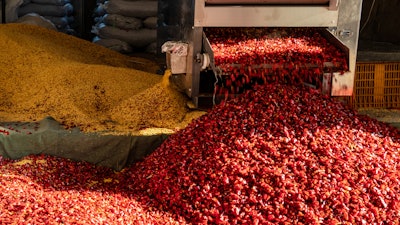 iStock
iStock
Unique risks and finding adequate insurance coverage
Insurance coverage for food processors has traditionally been readily available and relatively inexpensive given the high level of competition among insurance carriers. While this coverage will generally offer protection for the basic risks facing food processors discussed above, there are other areas of unique liability facing this industry that may go uncovered unless specifically addressed with customized insurance products. Below are some additional coverages to look for:
- Coverage for undamaged property and non-physical damage business income
- Condemnation of undamaged stock (in the event of a partial loss)
- Failure to meet specifications coverage (in the event of a reduction in value of property in the absence of direct physical loss or damage to property)
- Non-Physical Damage insurance coverage is particularly important for middle-market and large food processors that must protect their balance sheets from loss of gross profits, including market share loss, remediation and other mitigating costs. These may also include the impact of regulatory requirements or investigations.
- Coverage for research and development expenses, including coverage for regulated lab work and equipment
- Coverage for supply chain vulnerabilities requiring specialized solutions
- Coverage for stock held by third parties and other contingent business income exposures influenced by the need to maintain relationships with suppliers and key distributors.
- Business income coverage addressing operational restoration. Food processors may need to satisfy regulators after experiencing a physical loss and will need to demonstrate the safety of their products to regain compliance.
- Options for unlimited extended period of indemnity.
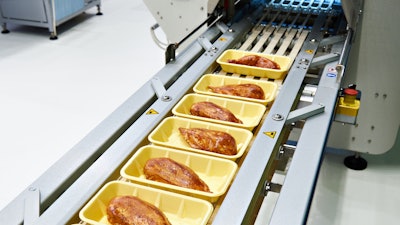 iStock
iStock
More unique casualty, crime and workers’ compensation coverages to consider:
- Product liability, errors & omissions, and product recall coverage: This coverage comes in handy both for the risk transfer and for access to specialized consulting services
- Coverage for M&A exposures: As a result of an M&A transaction, some food processors assume or retain exposures from the buying or selling party. These can arise from discontinued products out in the market or the sale of an unwanted business unit.
- Workers’ compensation coverage: These policies can also provide access to professional employer organizations (PEO). Joining these organizations allow business leaders to focus on their core competencies while the PEO handles employee management tasks like payroll, benefits, regulatory compliance and employee related safety concerns.
Covering the bases
Food processing companies need to ensure they maximize both traditional insurance as well as customized products that can fill the gaps created by the demands of regulators and an increasingly complex operating environment. Working with an experienced insurance broker that specializes in supporting food processing companies can prove of great assistance as they will be better positioned to help underwriters and food processors understand the unique risks these businesses  Dan Brettler
Dan Brettler
Daniel Brettler serves as the Managing Director, Life Science and Technology Co-Practice Leader at Conner Strong & Buckelew where he is responsible for the effective delivery of risk management & insurance products and services to life science & technology clients.



